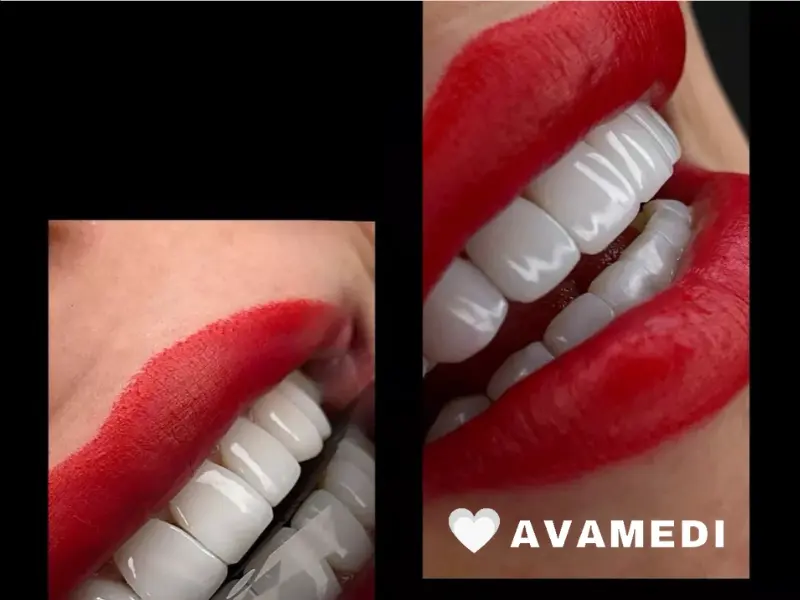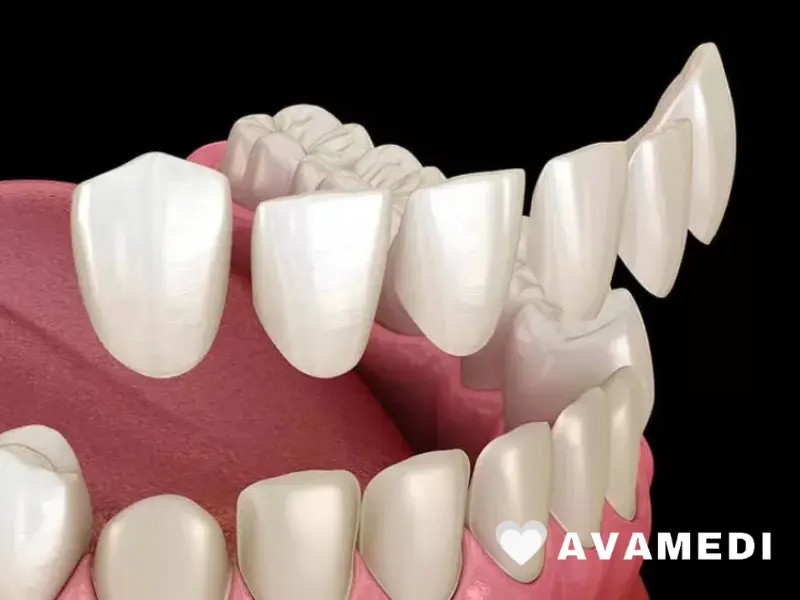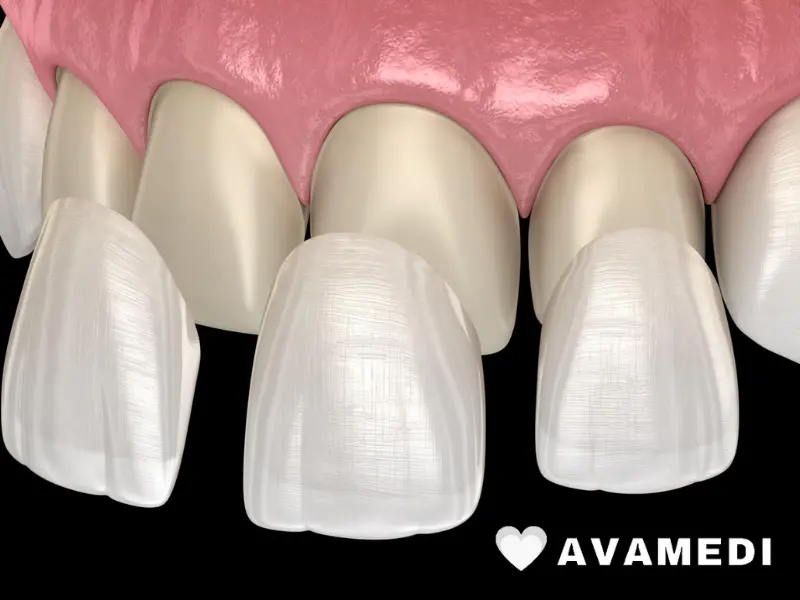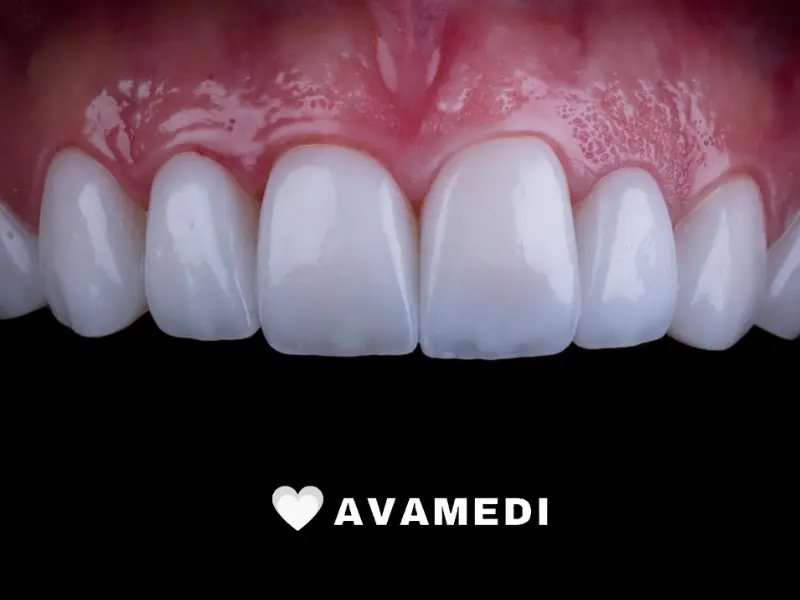Dental veneers are one of the most popular cosmetic dental treatments today, designed to enhance the appearance of teeth by improving their color, shape, and alignment. With various types of dental veneers available, it’s essential to understand how each type works, their pros and cons, and which one might be the best for your needs. In this detailed guide, we’ll explore the different types of dental veneers, compare them, and discuss their benefits, risks, and costs.
What Are Dental Veneers?
Dental veneers are thin, custom-made shells crafted to cover the front surface of teeth. They are typically used to improve the aesthetics of a person’s smile by hiding imperfections such as discoloration, chips, gaps, or irregular shapes. Veneers are bonded to the teeth and can change their color, size, shape, or length.
Veneers are most commonly made from porcelain or composite resin and are favored for their ability to mimic the natural appearance of teeth closely. They are a versatile solution for various cosmetic dental concerns and are often part of a broader smile makeover.
How Do Veneers Work?
Veneers work by covering the visible part of the tooth with a thin, strong, and durable material that resembles natural enamel. Here’s how the process typically unfolds:
- Consultation and Planning: Your dentist will first assess your dental health and discuss your aesthetic goals. This step includes X-rays, impressions of your teeth, and an evaluation of whether veneers are suitable for you.
- Tooth Preparation: For traditional veneers, a small amount of enamel, typically about 0.5 mm, is removed from the tooth’s surface. This is necessary to accommodate the veneer and ensure it sits flush with the other teeth. However, no-prep veneers require minimal to no enamel removal.
- Impression: After preparation, the dentist takes an impression of your teeth to create the custom veneer. For porcelain veneers, this impression is sent to a dental lab where your veneers are fabricated, a process that typically takes 1-2 weeks.
- Bonding: Once your veneers are ready, your dentist will check their fit, shape, and color. After any necessary adjustments, the veneers are permanently bonded to your teeth using a special adhesive.
- Polishing and Finishing: After placement, the veneers are polished to match the sheen of natural teeth, completing the look of a flawless smile.
Also Read: All You Need to Know about Hollywood Smile Price
What Are the Different Types of Dental Veneers?
There are several types of dental veneers available, each with unique characteristics, materials, and application methods. Below is a breakdown of the most common types:
Porcelain Veneers
Porcelain veneers are the most traditional and widely used types of dental veneers. Made from high-quality ceramic materials, they are known for their durability and natural appearance. They are highly resistant to stains, making them an excellent option for those looking to brighten their smile long-term. Porcelain veneers are also custom-made to match the shape, size, and color of your teeth.
Laminate Veneers
Laminate veneers are a subtype of porcelain veneers but are even thinner. Because they require less tooth reduction, they are considered a more conservative option. However, their application is similar to traditional porcelain veneers, offering an equally aesthetic result with a less invasive approach.
Ceramic Veneers
Ceramic veneers are similar to porcelain veneers but may be made from different ceramic materials. They offer a slightly translucent appearance, closely mimicking natural enamel. Like porcelain veneers, they are stain-resistant, durable, and an excellent choice for those seeking long-lasting results. Ceramic veneers are particularly suitable for patients with more significant cosmetic concerns.
Composite Veneers
Composite veneers are made from tooth-colored resin and are a more affordable alternative to porcelain veneers. The dentist molds and bonds the composite material directly to the tooth, allowing them to be applied in a single visit. While composite veneers are less durable and more prone to staining than porcelain, they are easier to repair and replace.
Lumineer Veneers
Lumineers are a brand of ultra-thin porcelain veneers that require little to no tooth preparation. Because they are thinner than traditional veneers, they can often be applied without removing any enamel. Lumineers are a good option for patients who want a reversible procedure, as they can be removed without damaging the natural tooth.
Palatal Veneers
Palatal veneers, also known as lingual veneers, are applied to the back (palatal) surface of the teeth rather than the front. They are commonly used to repair damage to the back of teeth, often caused by wear or acid erosion. While not a standard cosmetic procedure, palatal veneers can strengthen and protect teeth from further damage.
Emax Veneers
Emax veneers are made from lithium disilicate, a strong and aesthetically pleasing type of ceramic known for its durability, translucency, and lifelike appearance. Compared to other types of ceramic veneers, it is less prone to chipping and cracking, making it a premium option for those seeking a high-quality, long-lasting solution.
No-Prep Veneers
No-prep veneers are a category of veneers that require little to no removal of tooth enamel. They are a minimally invasive option, often made from ultra-thin porcelain or composite materials. These veneers are ideal for patients with minor cosmetic concerns who want to preserve the integrity of their natural teeth.
Removable Veneers
Removable veneers, also known as snap-on veneers, are a temporary cosmetic solution. Unlike permanent veneers, they can be removed at any time. They are custom-made to fit over the teeth and are typically used for special occasions or as a short-term cosmetic fix. While they do not offer the same durability or natural appearance as permanent veneers, they are a budget-friendly option for those looking for temporary results.
Avamedi provides the best prices and services for Dental Veneers in Iran
What Is the Best Type of Dental Veneer?
The best type of dental veneer depends on several factors, including your cosmetic goals, budget, and oral health. Here’s how different types of dental veneers compare:
- Porcelain Veneers: Best for long-lasting, natural-looking results; highly durable and stain-resistant.
- Composite Veneers: More affordable, but not as durable; best for those on a budget or looking for a quicker fix.
- Lumineers/No-Prep Veneers: Ideal for those who prefer a less invasive procedure without enamel removal.
- Emax Veneers: Best for those seeking a strong, durable, and natural-looking option.
Your dentist can help you decide which type of dental veneer is right for you based on your needs and preferences.
Difference Between Porcelain and Composite Veneers
Porcelain and composite veneers are two of the most common types of dental veneers, but they differ in several ways:
- Material: Porcelain veneers are made from high-quality ceramic, while composite veneers use a resin material.
- Durability: Porcelain veneers are more durable and resistant to staining, lasting up to 15 years or more, whereas composite veneers typically last around 5-7 years.
- Appearance: Porcelain veneers offer a more natural and translucent look compared to composite veneers, which may appear slightly less lifelike.
- Cost: Porcelain veneers are more expensive, while composite veneers are a more affordable option.
Composite Veneers vs Porcelain Veneers Cost
Porcelain veneers generally cost between $800 and $2,500 per tooth, while composite veneers are more affordable, ranging from $250 to $1,500 per tooth. The price difference is mainly due to the materials used and the longevity of each option.
Dental Veneers vs Laminates
Veneers and laminates are often used interchangeably, but they are not the same. Laminates are a specific type of veneer that is ultra-thin and requires minimal tooth preparation. Both are designed to improve the appearance of teeth, but laminates are considered a more conservative option.
- Thickness: Laminates are thinner than traditional veneers.
- Preparation: Less enamel needs to be removed for laminates.
- Durability: Traditional veneers tend to be more durable, as they are thicker and stronger.
Dental Veneers vs Crowns
Veneers and crowns both improve the appearance of teeth, but they serve different purposes:
- Veneers: Thin shells that cover only the front surface of the tooth.
- Crowns: Cover the entire tooth, providing structural support and protecting damaged teeth.
Crowns are usually recommended for severely decayed or damaged teeth, while veneers are used primarily for cosmetic improvements.
Dental Implants vs Veneers
Dental implants and veneers serve entirely different purposes:
- Dental Implants: Replace missing teeth with a titanium post and crown.
- Veneers: Improve the appearance of existing teeth without replacing them.
Implants are used for patients with missing or severely damaged teeth, while veneers are ideal for those looking to enhance the appearance of their natural teeth.
Teeth Bonding vs Veneers
Teeth bonding and veneers are both used to improve the appearance of teeth, but they differ in their application and durability:
- Bonding: It involves applying a tooth-colored resin to the surface of the tooth and shaping it to improve its appearance. It is a quicker and more affordable option but less durable than veneers.
- Veneers: More durable and offer a more natural-looking result, but also more expensive and invasive.
Bonding is often recommended for minor cosmetic fixes, while veneers are better for more significant aesthetic changes.
Ceramic Veneers vs Porcelain Veneers
Ceramic and porcelain veneers are both popular options, but they have subtle differences:
- Material: Ceramic veneers can be made from various types of ceramic, while porcelain veneers are a specific type of high-quality ceramic.
- Appearance: Both offer a natural look, but porcelain veneers tend to be slightly more translucent, closely mimicking the appearance of natural teeth.
- Durability: Both are durable, but porcelain veneers are generally more resistant to chipping and cracking.
Emax Veneers vs Zirconia Veneers
Emax and Zirconia veneers are two advanced types of ceramic veneers:
- Emax Veneers: Made from lithium disilicate, known for its strength, translucency, and lifelike appearance. Ideal for front teeth due to their aesthetic appeal.
- Zirconia Veneers: Made from zirconium dioxide, a highly durable material often used for back teeth where strength is essential. They are less translucent than Emax veneers but are incredibly strong.
Both types offer durability and excellent aesthetic results, but Emax is often preferred for visible front teeth, while Zirconia is more suited for teeth that require extra strength.
Risks and Benefits of Dental Veneers
Like any dental procedure, veneers come with both risks and benefits.
What Are the Advantages of Dental Veneers?
- Improved Appearance: Veneers can dramatically improve the color, shape, and alignment of teeth.
- Natural Look: Modern veneers are designed to mimic the look and feel of natural teeth.
- Stain Resistance: Porcelain veneers, in particular, are resistant to stains from coffee, tea, and wine.
- Durability: Veneers can last for many years, especially when made from high-quality materials like porcelain or Emax.
- Minimally Invasive: Compared to other cosmetic procedures, veneers are less invasive and require minimal tooth removal.
What Are the Disadvantages of Veneers?
- Cost: Veneers can be expensive, especially porcelain veneers.
- Irreversibility: Once enamel is removed, the process cannot be reversed.
- Sensitivity: Some patients experience increased sensitivity to hot and cold after getting veneers.
- Potential for Damage: Veneers can chip or crack, especially if you grind your teeth or bite on hard objects.
Are Veneers Permanent?
While veneers are not considered “permanent,” they are a long-lasting solution. Porcelain veneers, for example, can last 10-15 years or more with proper care. However, once enamel is removed during the preparation process, it cannot be restored, meaning that the procedure is not reversible. Additionally, veneers may eventually need to be replaced due to wear or damage.
Conclusion
In conclusion, dental veneers are a versatile and effective cosmetic dental treatment that can transform your smile. With various types of dental veneers available, from traditional porcelain to more innovative options like Emax and Lumineers, there’s a solution for nearly every dental concern and budget. By consulting with your dentist, you can choose the best type of dental veneer for your specific needs, ensuring a beautiful and long-lasting result.






















